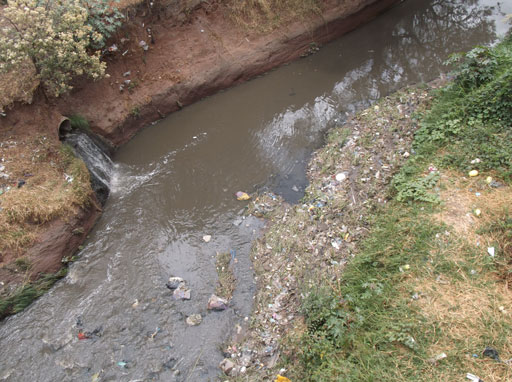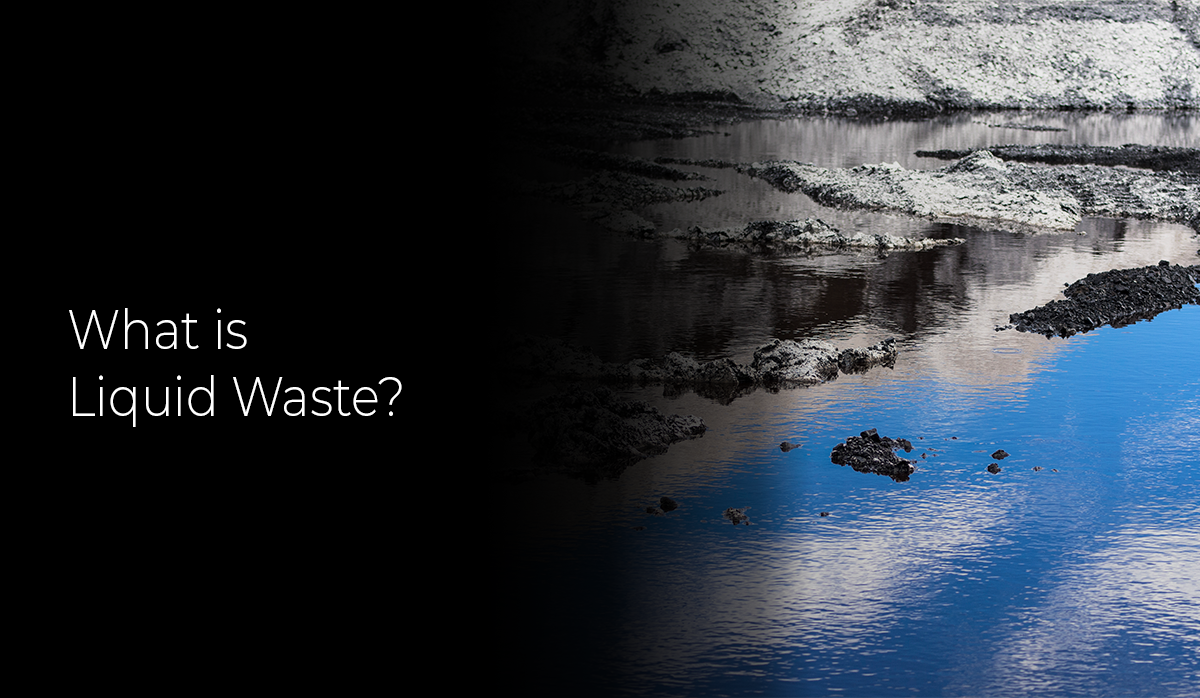Industrial Wastewater Treatment: Advanced Methods for Effective Administration
Industrial Wastewater Treatment: Advanced Methods for Effective Administration
Blog Article
Recognizing the Comprehensive Process of Liquid Garbage Disposal: Best Practices and Environmental Effect Factors To Consider
The administration of liquid waste disposal is a complex issue that requires an extensive understanding of various best techniques and their linked ecological impacts. From the types of liquid waste generated to the methods utilized for collection, treatment, and final disposal, each action plays a critical duty in safeguarding communities and public wellness. As regulative standards develop and technology advances, the conversation around these procedures ends up being significantly important. What ramifications do these adjustments hold for future sustainability initiatives, and just how can stakeholders make certain that they are effectively addressed?
Types of Liquid Waste
Understanding the various sorts of liquid waste is vital for reliable administration and disposal methods. Liquid waste can be generally classified right into a number of types, each calling for one-of-a-kind handling and therapy techniques.
Industrial fluid waste commonly consists of hazardous materials, including hefty steels, solvents, and chemicals, created during producing processes. These wastes require stringent governing conformity to safeguard human health and wellness and the setting. Residential fluid waste largely describes wastewater generated from households, including sewage and greywater, which, although less toxic, can still present significant dangers if incorrectly handled.
Agricultural liquid waste, consisting of drainage from farms, often includes fertilizers and chemicals that can cause ecological degradation if not treated adequately. Clinical liquid waste, generated from healthcare centers, consists of polluted liquids such as bodily liquids and chemicals, calling for specialized disposal techniques to avoid infection and ecological contamination.
Finally, oil and oil waste, typically produced by restaurants and vehicle industries, can cause severe obstructions in sewer systems otherwise handled properly. Comprehending these categories promotes targeted strategies for therapy, compliance with laws, and effective disposal techniques, ultimately promoting ecological sustainability and public health and wellness security.

Collection Techniques
Efficient collection methods are crucial for the correct monitoring of liquid waste, making certain that it is collected safely and efficiently before treatment or disposal. Numerous techniques are employed depending on the type of liquid waste produced, the volume, and the particular attributes of the waste.
One usual method is making use of committed collection storage tanks or sumps, which are made to record liquid waste at the resource. These systems typically incorporate pumps that assist in the transfer of waste to larger storage space containers or treatment centers. Furthermore, mobile collection systems furnished with vacuum modern technology are utilized in situations where waste is created periodically or in hard-to-reach places.
For industrial settings, closed-loop systems can efficiently lessen spills and leaks, enabling the recuperation and reuse of fluid waste. It is likewise necessary to train workers on correct collection protocols to minimize threats related to harmful compounds.
In addition, carrying out normal maintenance schedules for collection equipment makes certain ideal performance and security. The assimilation of sophisticated surveillance systems can improve collection effectiveness by supplying real-time information on waste levels and potential dangers. In general, efficient collection techniques are fundamental to sustainable liquid waste management practices.
Treatment Processes
Therapy procedures play an important duty in the management of liquid waste, transforming potentially hazardous products into secure effluents or recyclable resources - liquid waste disposal. These processes can be broadly classified into physical, chemical, and biological approaches, each tailored to address particular impurities present in the waste stream
Physical therapy techniques, such as sedimentation and purification, work by removing suspended solids and particulate matter. These methods are commonly the first action in the therapy chain, effectively lowering the load on subsequent processes. Chemical therapies include using reagents to counteract unsafe substances, linked here speed up hefty metals, or oxidize natural contaminants, consequently improving the safety of the effluent.
Organic treatment procedures, including triggered sludge systems and anaerobic digestion, maximize the all-natural capabilities of microorganisms to deteriorate natural matter. These approaches are particularly reliable for wastewater consisting of biodegradable contaminants. Advanced therapy technologies, such as membrane filtration and progressed oxidation procedures, are progressively used to accomplish greater degrees of filtration.
Incorporating a mix of these treatment techniques not just ensures compliance with regulatory requirements however additionally advertises environmental sustainability by recouping valuable resources from liquid waste.
Disposal Options
Just how can organizations guarantee the secure and liable disposal of fluid waste? Efficient disposal choices are critical for safeguarding public health and wellness and the setting. The key methods include land therapy, incineration, and disposal followed by discharge into local wastewater systems.
Land disposal includes the cautious control of fluid waste in marked land fills, ensuring that it does not seep into bordering dirt or water. Incineration, on the other hand, subjects liquid waste to high temperatures, transforming it into ash and gases, which require proper filtration to lessen exhausts. This approach is appropriate for harmful wastes that can not be dealt with via standard ways.
In situations where liquid waste can be treated, organizations may choose chemical or organic therapy processes to reduce the effects of damaging components prior to releasing the dealt with effluent right into metropolitan systems. This path usually lines up with regulatory needs, ensuring that the effluent meets safety and security criteria.
Eventually, organizations should conduct thorough analyses of each disposal option to determine its practicality, considering variables such as waste structure, regulatory conformity, and possible risks to wellness and the atmosphere. By picking ideal disposal techniques, businesses can add to an accountable waste monitoring approach.
Environmental Influence
The environmental influence of fluid garbage disposal is a vital factor to consider for companies seeking to minimize their environmental footprint. Incorrect disposal methods can lead to considerable contamination of water resources, soil deterioration, and adverse results on local ecological communities. For instance, harmful liquids can leach right into groundwater, posing threats to drinking water supplies and water life. In addition, the discharge of without treatment or improperly treated waste into surface waters can cause eutrophication, leading to oxygen exhaustion and the succeeding death of fish and various other organisms.

To reduce these impacts, organizations need to embrace finest methods such as executing rigorous waste therapy processes, promoting recycling and reuse, and sticking to regulatory criteria. By taking an aggressive technique to fluid waste monitoring, entities can dramatically reduce their ecological impact while supporting lasting growth objectives. Eventually, an extensive understanding of the environmental influences connected with fluid garbage disposal is vital for informed decision-making and liable stewardship of all-natural sources.
Conclusion
Reliable administration of liquid waste is essential for protecting ecological stability and public wellness. By embracing ideal methods in disposal, collection, and therapy, alongside adherence to regulative standards, the possibility for dangerous contamination of environments can be considerably lowered. Constant innovations in modern technology and weblink processes add to sustainable waste monitoring efforts. Inevitably, a detailed understanding of fluid waste disposal not only minimizes environmental impacts however additionally fosters a commitment to my link responsible source monitoring and environmental stewardship.
The monitoring of fluid waste disposal is a multifaceted problem that calls for an extensive understanding of numerous ideal techniques and their connected ecological influences. From the kinds of fluid waste created to the methods utilized for collection, therapy, and final disposal, each step plays an essential role in securing ecological communities and public wellness.The ecological influence of fluid waste disposal is a crucial consideration for organizations seeking to decrease their environmental impact. Eventually, a detailed understanding of the ecological effects connected with liquid waste disposal is essential for informed decision-making and liable stewardship of all-natural sources.
Eventually, a thorough understanding of fluid waste disposal not only alleviates ecological effects however also cultivates a dedication to responsible source administration and environmental stewardship.
Report this page